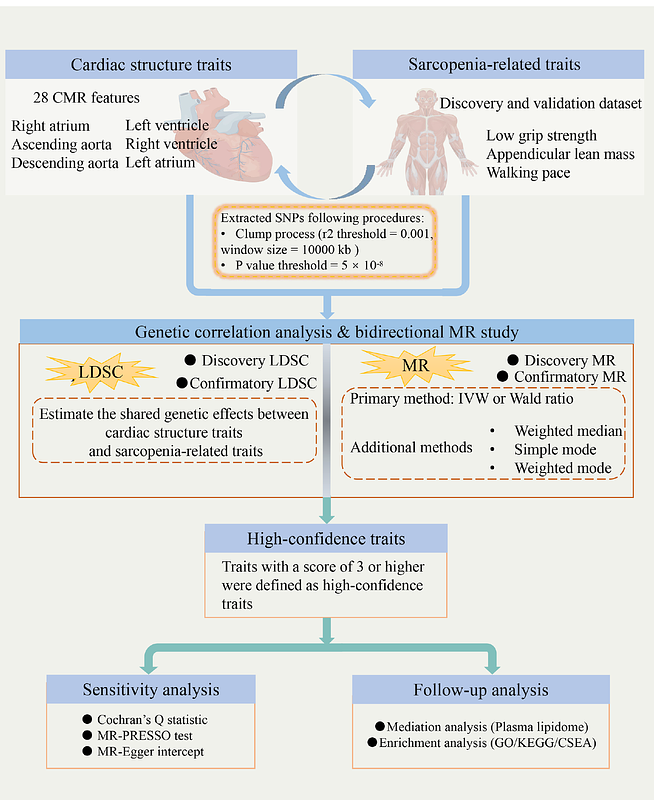Bridging Hearts and Muscles: Genetic Insights into Cardiac Structure and Sarcopenia

Bridging Hearts and Muscles: Genetic Insights into Cardiac Structure and Sarcopenia
Wang, C.; Xie, W.; Zhu, Y.; Liu, Z.; Yang, G.; Zhong, D.; Li, Y.; Zhao, S.
AbstractBackground: Currently, the link between cardiovascular diseases and sarcopenia is increasingly garnering attention from researchers. However, studies exploring the association between cardiac structure and sarcopenia are sparse. This study aims to investigate the potential genetic links between cardiac structural features and sarcopenia. Methods: During the discovery phase, we employed Linkage Disequilibrium Score Regression (LDSC) and Mendelian Randomization (MR) to assess the genetic correlation and causality between traits related to cardiac structure and sarcopenia, with further validation of the results using validation set data. In the study, we established a scoring system to identify high-confidence trait pairs. For these pairs, we conducted sensitivity analyses to assess their heterogeneity and pleiotropy. Additionally, we undertook follow-up studies of these trait pairs, including using mediation analysis to evaluate the potential mediating effects of lipids, and enrichment analysis to explore possible shared biological pathways linking these characteristics. Results: The genetic correlation analyses during the discovery and validation phases identified 5 pairs (in forward analysis) and 16 pairs (in reverse analysis) of high-confidence trait pairs. As a key sarcopenia-related feature, appendicular lean mass (ALM) exhibited positive causal relationships with several cardiac structural features, including the volumes of the left and right atria. Mediation analysis suggested that certain lipids, such as phosphatidylcholine, might mediate these causal relationships. Notably, gene and pathway enrichment analyses revealed that genes associated with significant SNPs in high-confidence trait pairs were enriched in multiple key biological processes and pathways, such as tube morphogenesis, cardiac right ventricle morphogenesis, and muscle system processes in the forward analysis, as well as skeletal system development, heart development, and hemopoiesis in the reverse analysis. Cell-type enrichment analysis pointed to endothelial cells, smooth muscle cells, fibroblasts, and mesenchymal stem cells. Conclusions: This study provides evidence for genetic relationships between cardiac structures and sarcopenia-related traits. These findings may enhance our understanding of the biological mechanisms underlying age-related diseases and provide scientific basis for developing future preventive and therapeutic strategies.